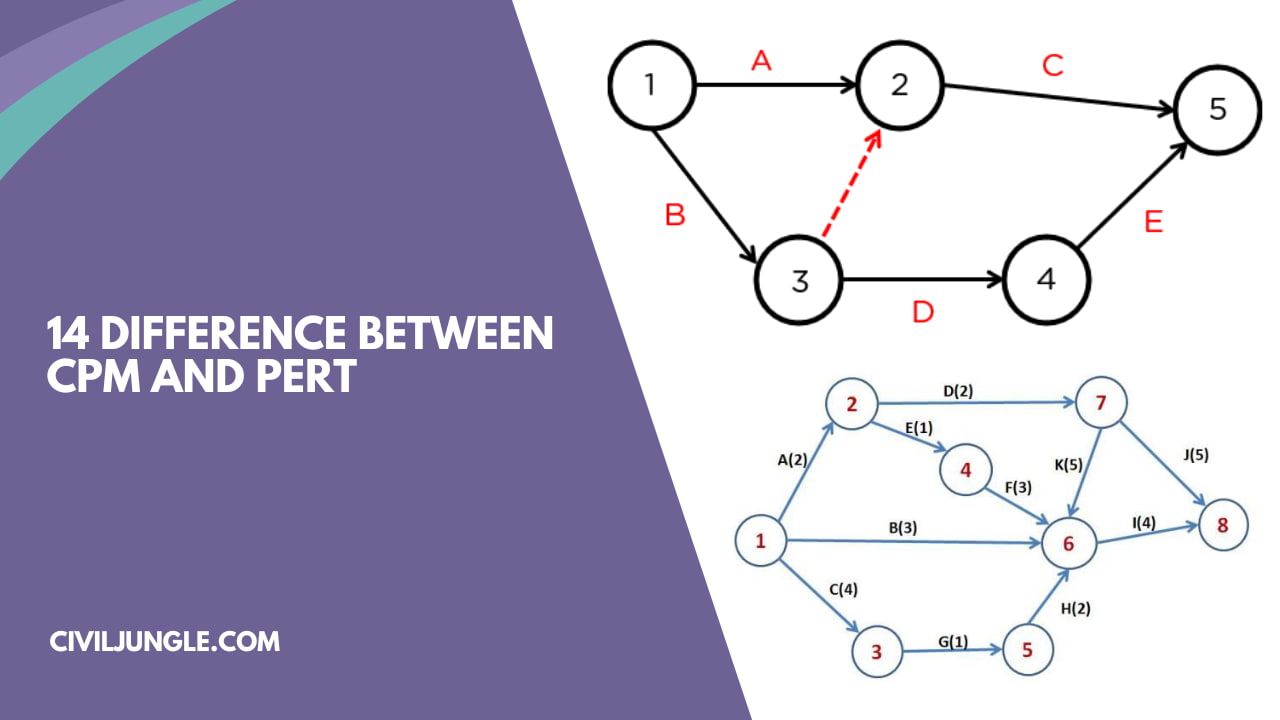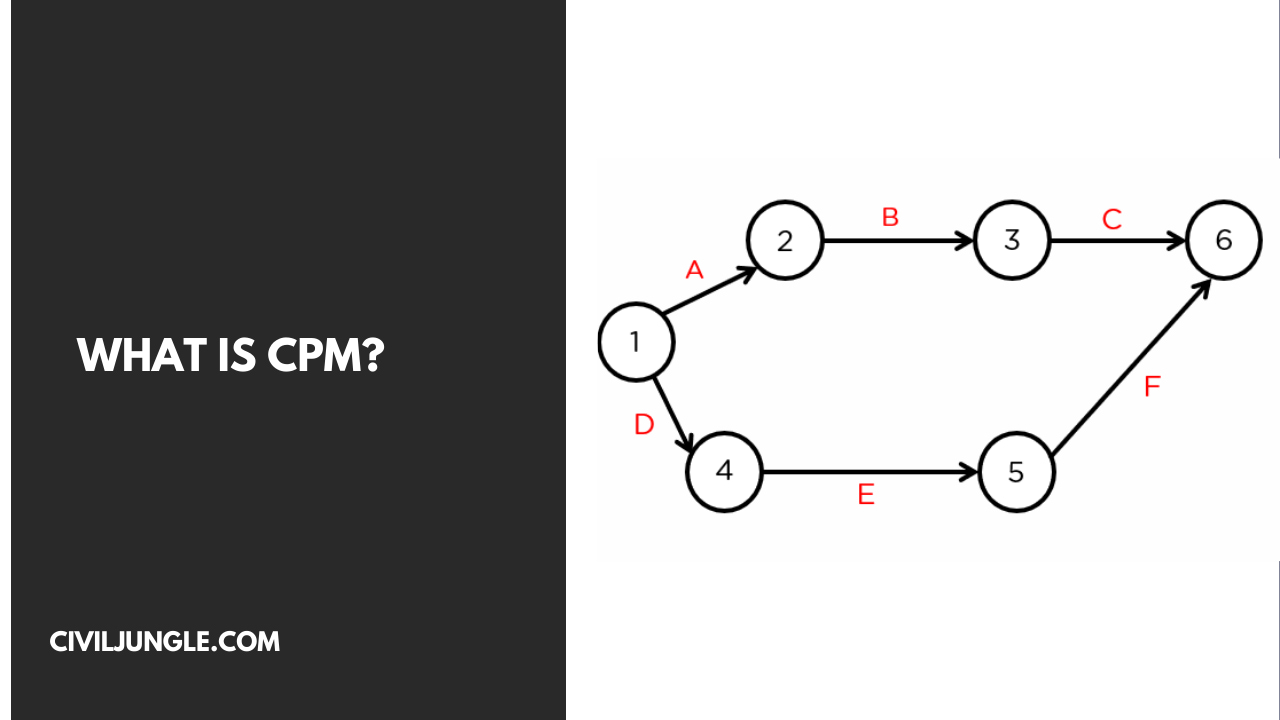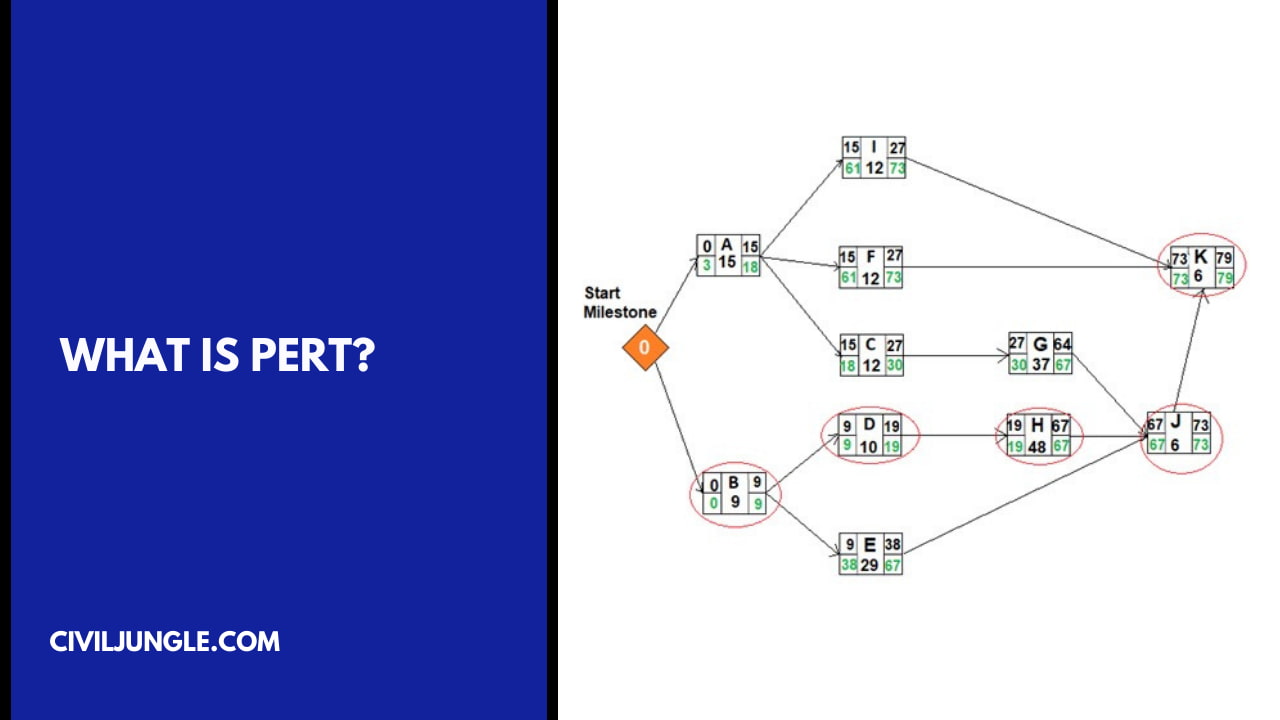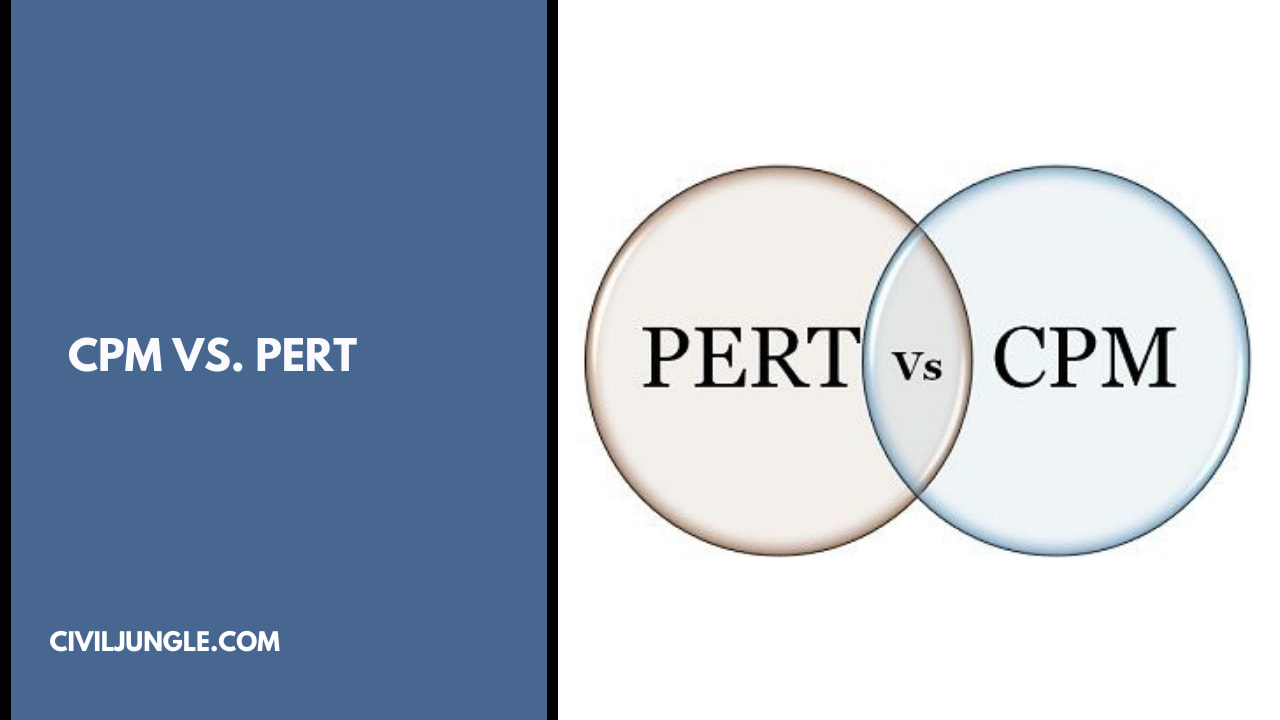The network technique is a major advance in management science.
This technique is based on the basic characteristics of all projects, that all work must be done in well-defined steps. For example, for completing a foundation, the various steps are (1) Layout, (ii) Digging, (iii) Placing Sideboards, and (iv) Concreting.
The network technique exploits this characteristic by representing the steps of the project objective graphically in the form of a network or arrow diagram.
It would be difficult to find in the history of management methods any technique which has received such widespread attention as that accorded to network methods for planning, scheduling, and controlling.
The network techniques are called by various names such as PERT, CPM, UNETICS, LESS, TOPS, and SCANS. However, these and other systems have emerged from the following two major network system:
- CPM
- PERT
What Is CPM?
Important Point
Critical Path Method
CPM Full name Critical Path Method
Critical Path Method (CPM) is an effective tool for scheduling the activities of a complex Project. It was developed by Morgan R. Walker of DuPont and James E. Kelley Jr. of Remington in 1950.
In CPM networks, the entire project consists of a number of clearly recognizable operations or jobs, called activities. Activities are usually operations that take time to carry out, and on which resources are an expense.
Junctions between activities are term as events. The CPM net-works are often referred to as activity-oriented diagrams in which an arrow represents each activity, and the sequence of the arrows shows the sequence in which the activities are performed.
For example, at a foundation construction project, the various activities may be; layout the foundation trench’, ‘excavate the foundation,’ ‘put sideboards,’ ‘concrete the foundation base,’ etc.
CPM network is generally used for repetitive kind projects, or for those projects for which a quite accurate estimate of time for completion of each activity may be made; and for which cost estimations may be made using a fair degree of accuracy.
For example, CPM is very helpful for construction projects. But it isn’t suitable for development and research projects.
Also, read:Methods of Design | Difference Between Working Stress Method and Limit State Method
CPM Basic Steps:
- Determine the required tasks
- List required tasks in sequence
- Create a flowchart including each required task
- Identify all critical and non-critical relationships (paths) among the required tasks
- Assign an expected completion/execution time for each required task
- Study all critical relationships to determine all possible alternatives or backups for as many as possible
Also, read: What Is Building Bye-Laws
What Is PERT?
Program Evaluation Review Technique
PERT full name Program Evaluation Review Technique
This PERT method First developed by the United States Navy in 1958, is commonly used in conjunction with the critical path method in the year 1957 (CPM).
The method was developed from the Navy Special Projects Office at co-operation with Booz, Allen, and Hamilton, a management consulting firm, also Lockheed Missile System Division for assessing the feasibility of existing schedules on Polaris missile program and for reporting progress.
The PERT system uses a network diagram consisting of pf events that have to be established to reach project objectives. An event is that particular instant of time where some specific part of a plan is to be achieved.
It indicates a point in time and does not require any resources. PERT uses event-oriented network diagrams in which arrows join successive events.
For example, at a foundation construction project, the various events could be’foundation layout started,” foundation excavated,” sideboards fixed,” concreting completed’ etc.
The approach of event-orientation in the network diagram grew out of the desire to report on the project progress via discernible management milestones.
Also, read: Trapezoidal Footing Formula with Calculation
PERT Basic Steps:
- Identifying Tasks and Milestones: Each project involves a series of required tasks. These tasks are listed in a table, permitting additional information on timing and sequence to be added later.
- Placing the Tasks at a Proper Sequence: The tasks Have Been Examined and placed in a sequence to get the desired results.
- Network Diagramming: A network diagram is drawn with the activity sequence data showing the sequence of concurrent and sequential activities.
- Time Estimating: Here Can Be the time required to carry out each activity, in three parts:
- Optimistic timing: The shortest time to complete an activity
- Most likely timing: The completion time having the highest probability
- Pessimistic timing: The longest time to complete an activity
- Critical Path Estimating: This determines the entire time required to complete a project.
Also, read: Methods of Design | Difference Between Working Stress Method and Limit State Method
CPM Vs. PERT
| Sr.No. | CPM | PERT |
| 1 | CPM full name Critical Path Method | PERT full name Program Evaluation Review Technique |
| 2 | PERT is that technique of project management which is used to manage uncertain (i.e., time is not known) activities of any project. | CPM is that technique of project management which is used to manage only certain (i.e., time is known) activities of any project. |
| 3 | The CPM is a statistical technique of project management this is managed well-defined activities of a project. | The PERT is a project management technique, used to manage uncertain activities of a project. |
| 4 | This CPM is a method to control cost and time. | The PERT is a technique of planning and control of time. |
| 5 | CPM Method orientation like Activity-oriented | PERT Method orientation like Event-oriented |
| 6 | In CPM method evaluation of Evolved as Construction project | In this method evaluation of Evolved as a Research & Development project |
| 7 | Model type Deterministic | Model type Probabilistic |
| 8 | In this method Focus on Time-cost trade-off | In this method Focus on Time |
| 9 | CPM Method calculated estimates only one-time estimate | Here, the PERT method estimates Three-time estimates |
| 10 | Appropriate for Reasonable time estimate | Appropriate for High precision time estimate |
| 11 | Management of Predictable activities | Management of Unpredictable Activities |
| 12 | Nature of jobs Repetitive nature | Nature of jobs Non-repetitive nature |
| 13 | Critical and Non-critical activities is Differentiation | Critical and Non-critical activities are No Differentiated |
| 14 | Use in Research and Development Project | Use in Non-research projects like civil construction, shipbuilding etc. |
What Is Cpm?
The critical path method (CPM) is a technique where you identify tasks that are necessary for project completion and determine scheduling flexibilities. A critical path in project management is the longest sequence of activities that must be finished on time in order for the entire project to be complete.
Pert Vs Cpm
The main difference between PERT and CPM is that PERT focuses on time planning and time management, with a goal of delivering the project as quickly as possible. CPM focuses on time and budgeting, which is useful for bringing in the project on budget as well as on time.
What Is Pert?
Program Evaluation and Review Technique (PERT) is a project management tool used to analyze and represent the tasks involved in completing a given project.
Difference Between Cpm and Pert
PERT is a project management technique, whereby planning, scheduling, organising, coordinating and controlling uncertain activities are done. CPM is a statistical technique of project management in which planning, scheduling, organising, coordination and control of well-defined activities take place.
Pert and Cpm Full Form
Project Evaluation and Review Technique (PERT) and Critical Path Method (CPM) are both useful tools when planning and controlling a project. PERT and CPM are complementary and both are important analytical techniques in project management when managing tasks.
Cpm Is the
In CPM, a project is represented as a network diagram, often called a PERT chart (Program Evaluation and Review Technique). The network diagram consists of nodes, representing activities, and directed arrows, representing the dependencies between the activities.
Cpm Is Oriented Technique
The term “oriented technique” is not commonly associated with the Critical Path Method. Instead, it is more commonly used in reference to other project management techniques like Object-Oriented Programming (OOP) or Object-Oriented Analysis and Design (OOAD) in software development.
What Is the Difference Between Cpm and Pert?
The main difference is that PERT is a visual technique. It helps project managers plan, schedule and control tasks, also referred to as activities. CPM is a statistical technique, though it’s also used to plan, schedule and control. However, it uses well-defined tasks to do so.
Pert Is What Oriented
PERT (Program Evaluation and Review Technique) is an activity-oriented project management technique. It focuses on the sequencing and scheduling of activities in a project to estimate the project’s duration and identify potential risks and bottlenecks.
Full Form of Pert
A PERT chart is a visual project management tool used to map out and track the tasks and timelines. The name PERT is an acronym for Project (or Program) Evaluation and Review Technique.
Pert-Cpm Meaning
PERT-CPM, also known as PERT/CPM, refers to the combined use of both the Program Evaluation and Review Technique (PERT) and the Critical Path Method (CPM). PERT and CPM are two project management techniques that are often used together to effectively plan, schedule, and control complex projects.
Cpm Analysis Is Activity Oriented
CPM is activity oriented i.e. CPM network is built on the basis of activities. PERT is event oriented. CPM is a deterministic model i.e. it does not take into account the uncertainties involved in the estimation of time for execution of a job or an activity.
What Is Pert and Cpm?
PERT – Project Evaluation and Review Technique. CPM – Critical Path Method. What does It Mean? PERT – PERT is a popular project management technique that is applicable when the time required to finish a project is not certain. CPM – CPM is a statistical algorithm which has a certain start and end time for a project.
Like this post? Share it with your friends!
Suggested Read –
Originally posted 2023-05-16 16:00:58.





Leave a Reply